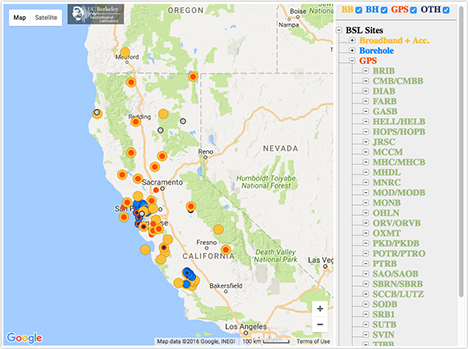SBRN - San Bruno
We operate broadband and borehole stations under the network code BK. The Berkeley Digital Seismic Network (BDSN) is a regional network of very broadband and strong motion seismic stations designed to monitor regional seismic activity as well as provide high quality data. The Berkeley borehole stations have borehole geophones or other seismic sensors and may have other geophysical instrumentation.
BARD is our GPS network for monitoring crustal deformation across the Pacific-North America plate boundary and in the San Francisco Bay Area for earthquake hazard reduction studies and rapid earthquake emergency response assessment
| Station Name | SBRN (SBRU) |
| In Operation | 2002/08/15 00:00:00 - Present |
| Latitude | 37.69 |
| Longitude: | -122.41 |
| Elevation: | -1.33 meters |
| Instrumentation | Broadband GPS Other |
Location
SBRN is located on San Bruno Mountain, under the auspices of the city of Brisbane. This site is known as SFBSB in the USGS Low Frequency Network.Network
Berkeley Digital Seismic Network (BK)Bay Area Regional Deformation Network (BARD)
Geology
marine sedimentary and metasedimentary rocks
Borehole Conditions
The MiniPBO borehole was installed on 08/06/2001. The strainmeter was installed at 551.5 ft and the seismometer package at 530.0 ft depth. This figure shows the location of equipment in the borehole.GPS Monument Description
Threaded rod cemented into roof of structure.Seismic Station Pictures
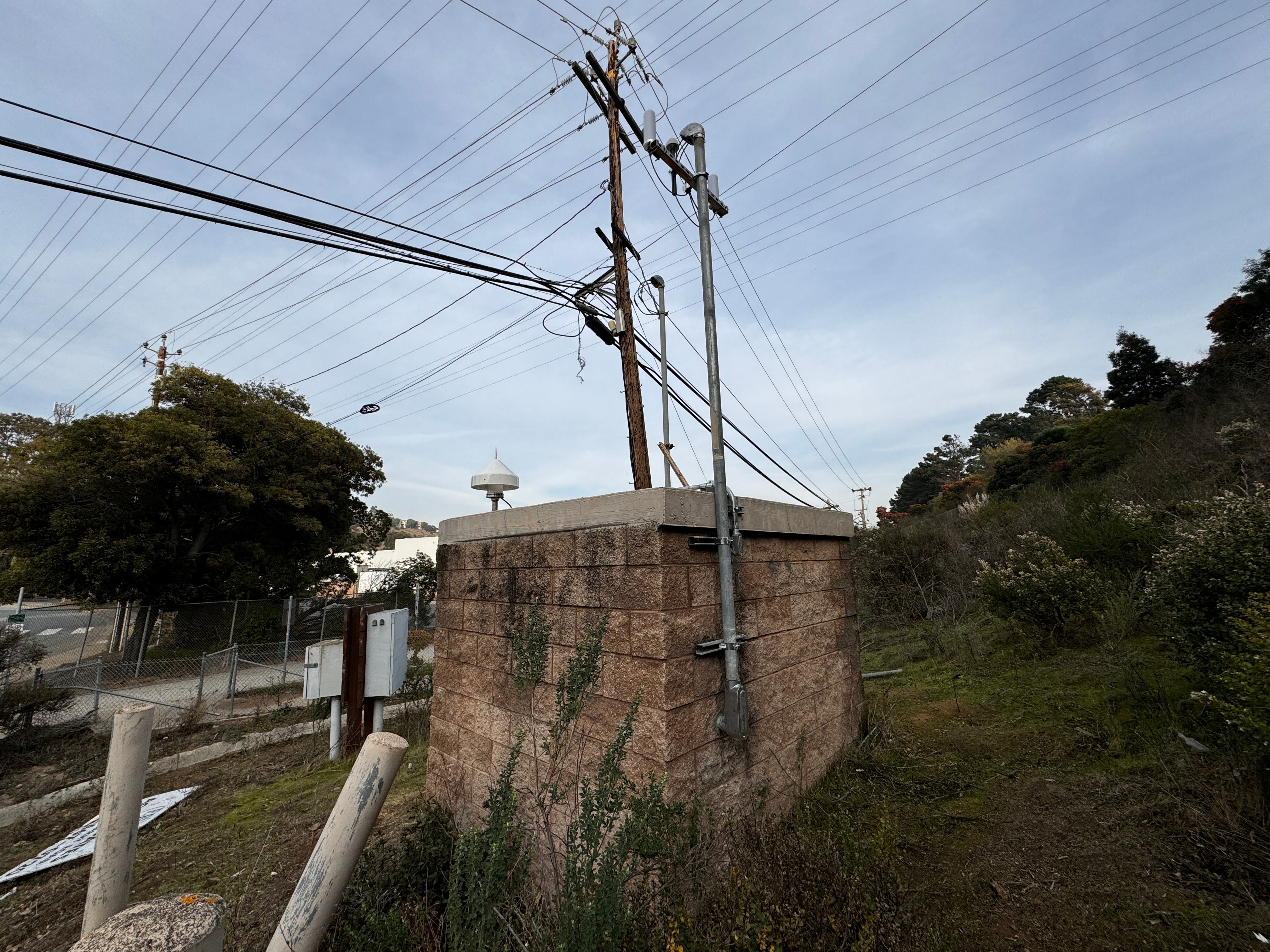
View of SBRN equipment building |
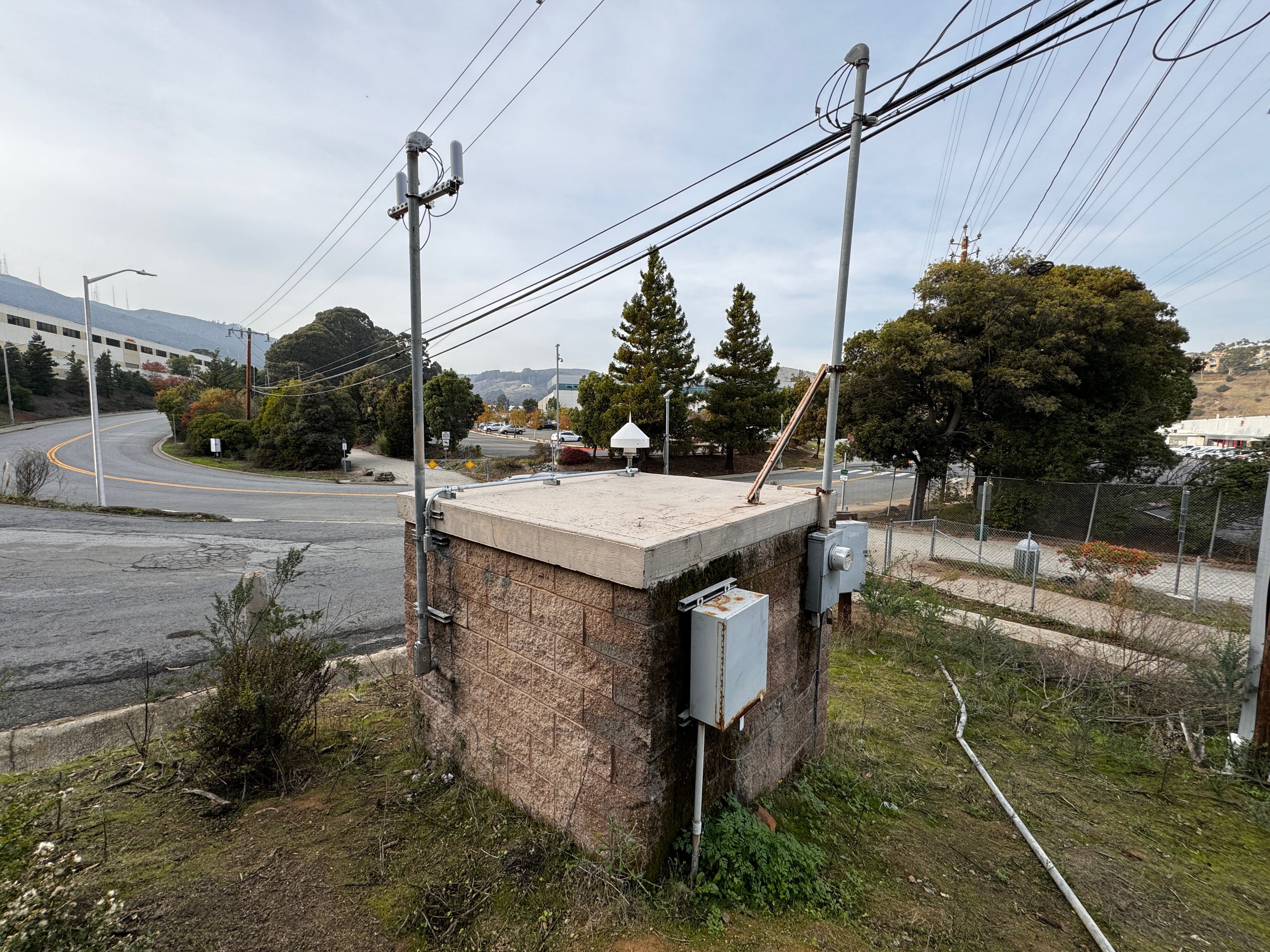
View of SBRN equipment building |
GPS Station Daily Timeseries
- Time series processing at the BSL *
-
Last year Clean Clean & detrended Raw Raw & detrended Lifetime Clean Clean & detrended Raw Raw & detrended Text file (final results only) Clean Raw
-
*discontinued
GPS Station Pictures
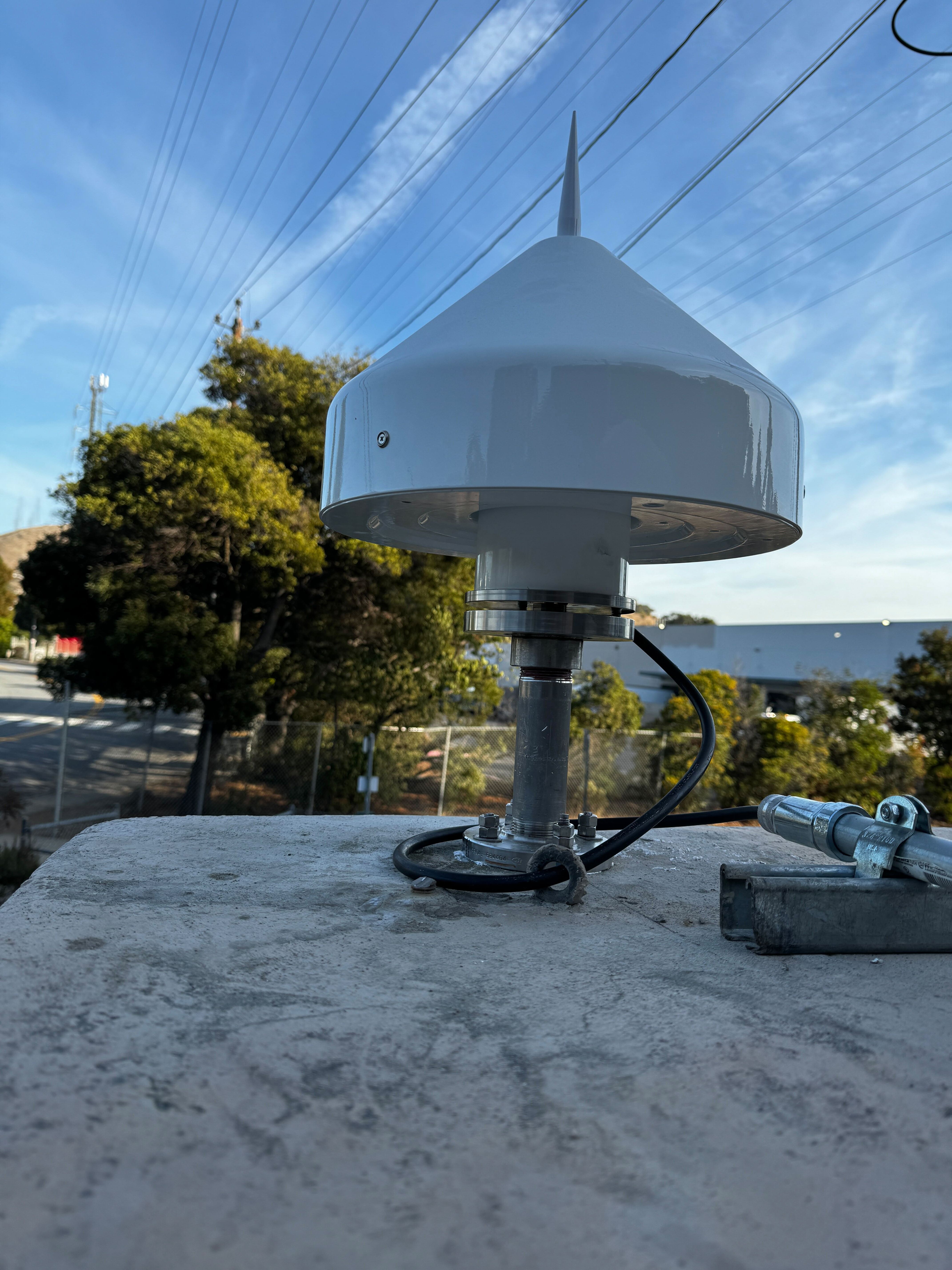
SBRU |
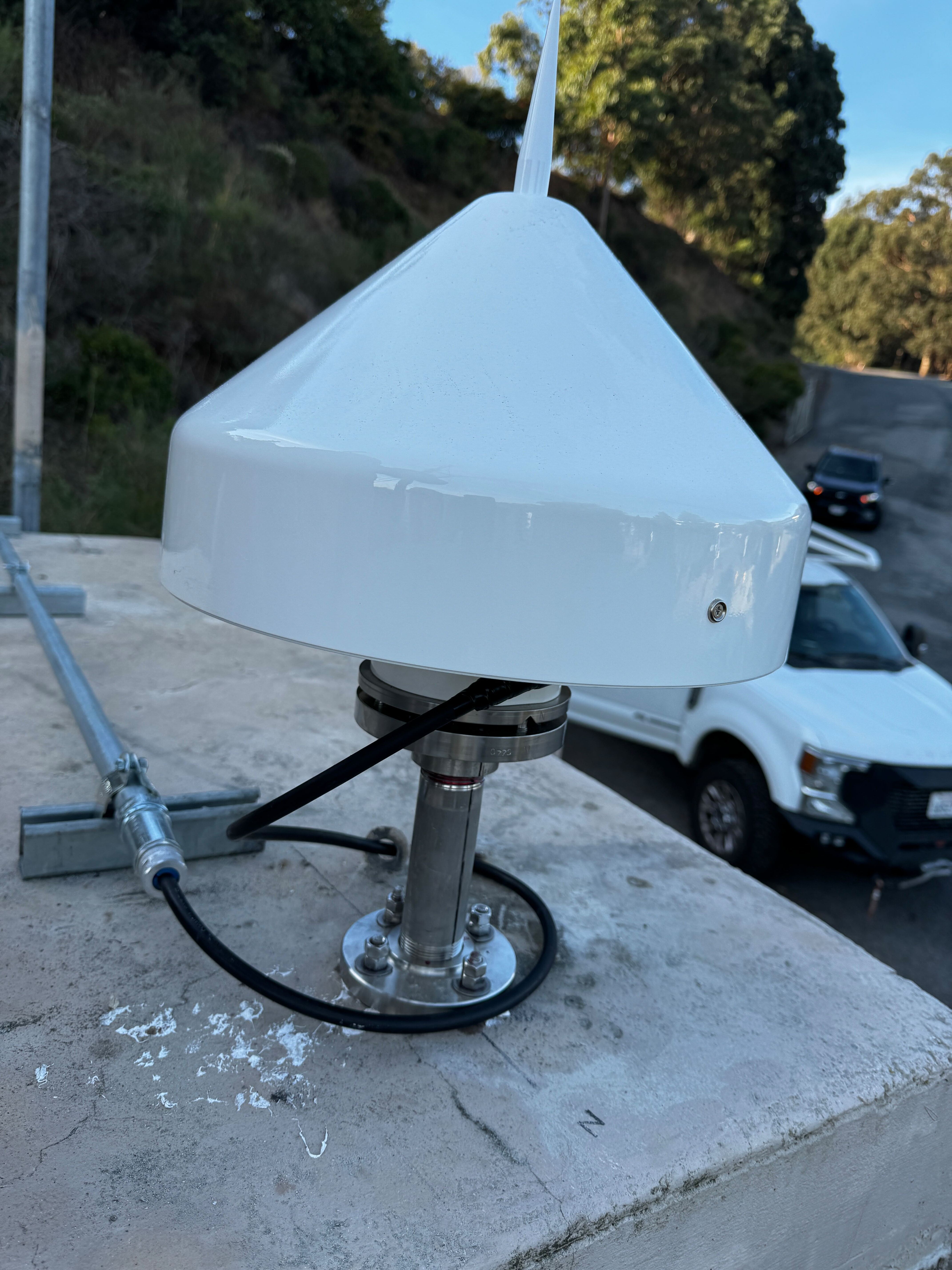
SBRU |
Table of Seismic Instrumentation
| Sensor | Datalogger | SEED Channels | Location | |
| Geophone | Mark Products L-22 Horizontal Geophone | Q330-GFE | EP?,LP?,SP? | 40 |
| Mark Products L-22 Vertical Geophone | Q330-GFE | EP?,LP?,SP? | 40 | |
| Sensor | Datalogger | SEED Channels | Location | |
| Auxiliary | AntennaCurrent | Q330-GFE | VE? | 40 |
| ClockPhase | Q330-GFE | LC?,VC? | 40 | |
| ClockQuality | Q330-GFE | LC?,VC? | 40 | |
| InputVoltage | Q330-GFE | VE? | 40 | |
| Paroscientific 8WD Digital Pressure Meter | Q330-GFE | LD? | 40 | |
| Sacks 3-component Tensor Strainmeter | Q330-GFE | BS?,HS?,LS? | 40 | |
| SystemCurrent | Q330-GFE | VE? | 40 | |
| SystemTemperature | Q330-GFE | VK? | 40 | |
| VCOValue | Q330-GFE | VC? | 40 | |
| CalibrationInput | QEP | LC? | EP | |
| Humidity | QEP | LI? | EP | |
| Pinnacle5000 | QEP | BA?,LA? | EP | |
| Pressure | QEP | LD? | EP | |
| Setra Systems Model 270 Barometer | QEP | LD? | EP | |
| Temperature | QEP | LK? | EP |
GPS Instrumentation
| Receiver | Antenna | Radome | - | |
| GPS | SEPTENTRIO POLARX5 | SEPTENTRIO SEPCHOKE_B3E6 | SPKE | - |
Waveforms and associated metadata, and GPS data, are available at the Northern California Earthquake Data Center (NCEDC).
Waveform Data
- BK Information Directory, including
- List of station locations
- List of available channels
- Instrument Response
- Querying the archives
- Download waveform data
GPS Data
- Site log: sbru.log
Data Type From To Low-rate raw --- --- Low-rate rinex 01/24/2024 present High-rate raw 01/24/2024 present High-rate rinex 01/24/2024 present
Noise Analysis
 |
GPS Data Quality
Completeness
Data completeness is defined both as "Completeness of observations" and "Cycle slips per observation". "Completeness of Obs." is the number of epochs in the final RINEX file normalized to the expected number. This percentage will go down if time is missing from the RINEX file. "Cycle slips per Obs." is the total number of detected cycle slip normalized to the total number of observations in the RINEX file. This number will increase as the receiver loses lock on satellites more frequently.
| Previous Year |
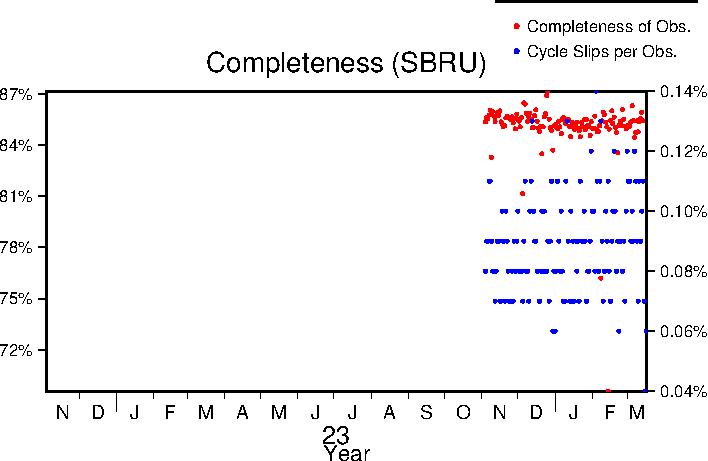 |
| Lifetime |
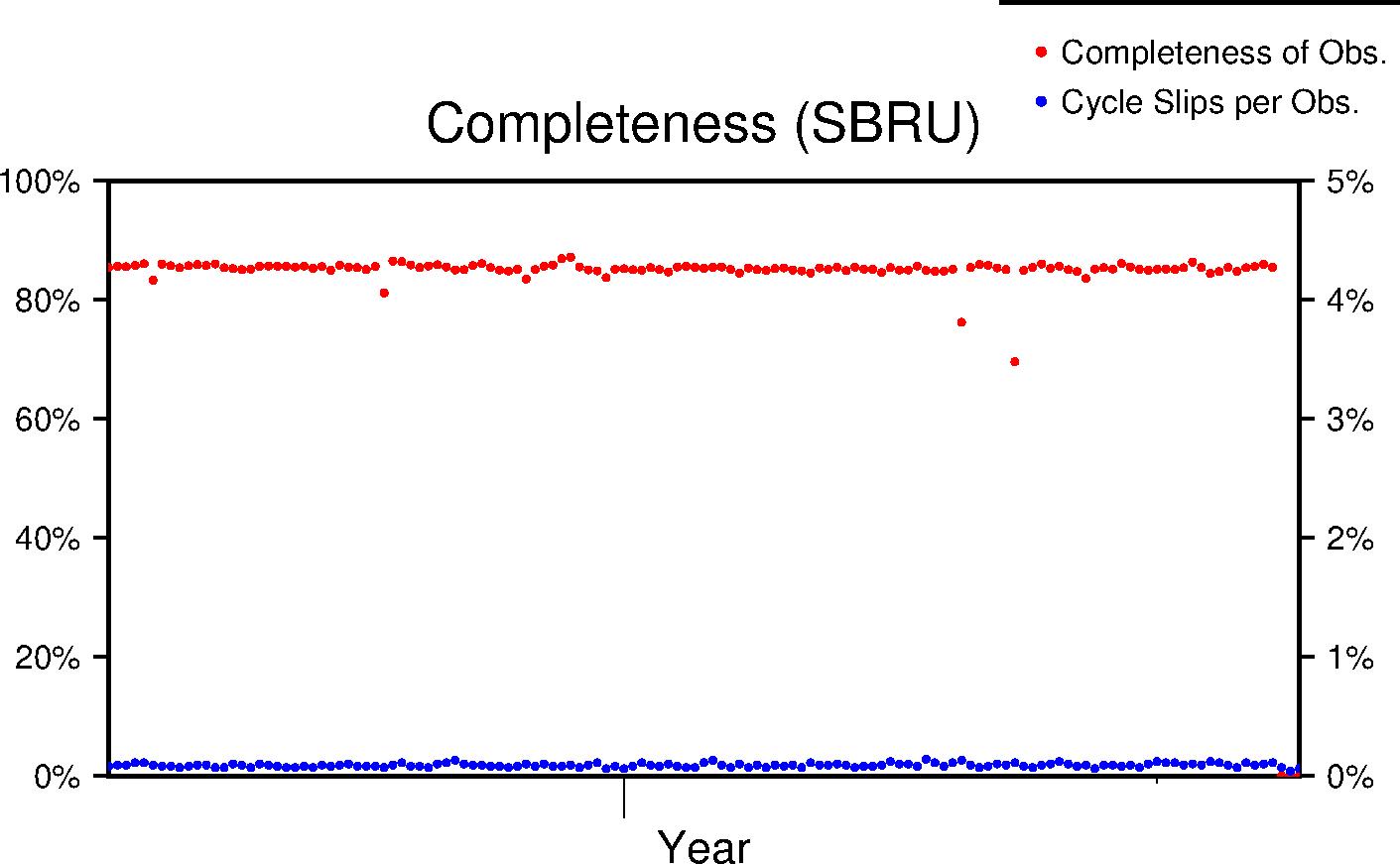 |
Multipath
The effects of multipath on the data are estimated by parameters for L1 and L2 (MP1 and MP2 respectively); see Estey and Meertens (GPS Solutions, 1999) for derivation. The daily value is the RMS of MP1 and MP2 throughout the day and for all satellites. Higher values indicate a greater prevalence and/or strength of multipathing, i.e. objects on the ground are providing multiple reflection pathways from the satellite to antenna.
| Previous Year |
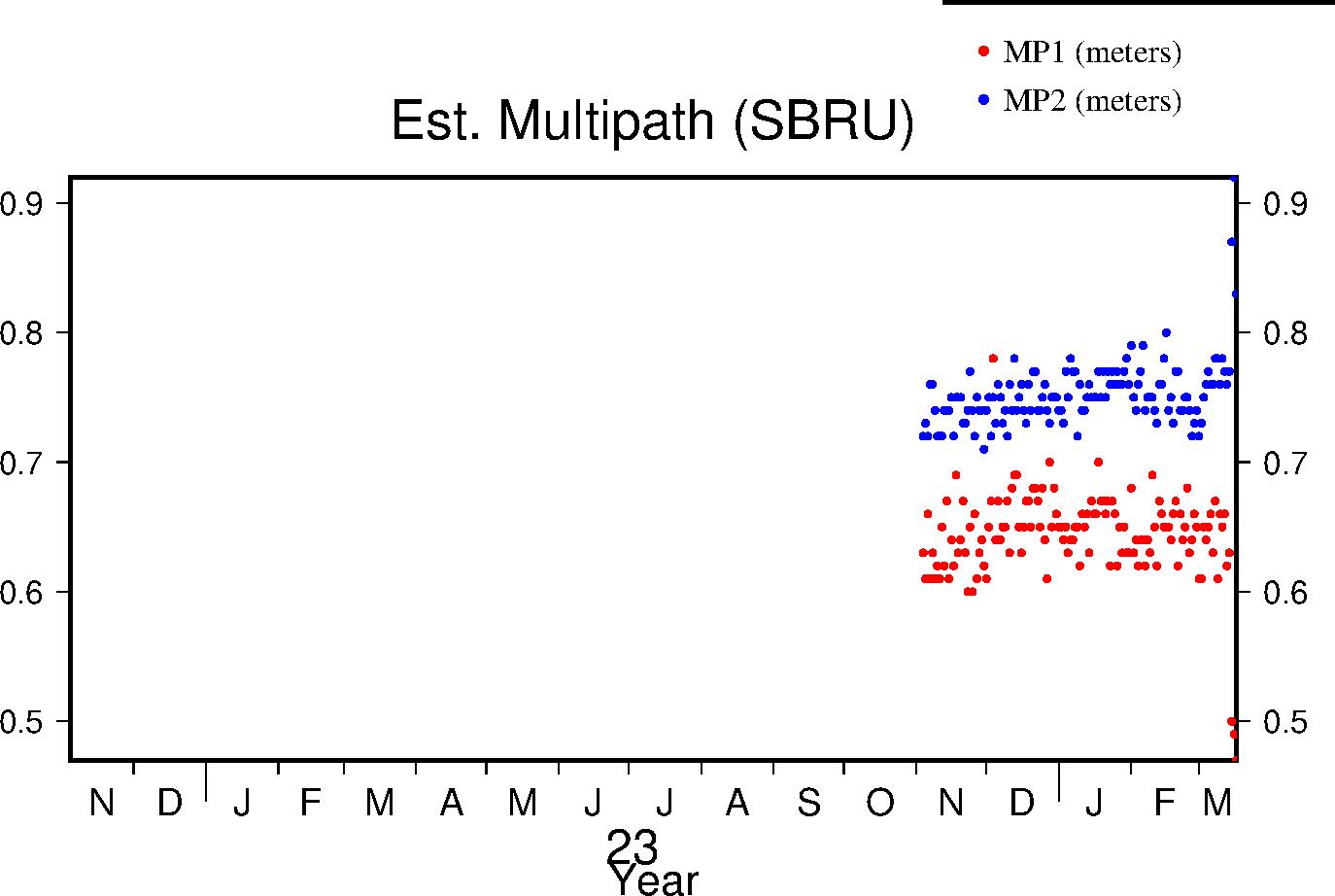 |
| Lifetime |
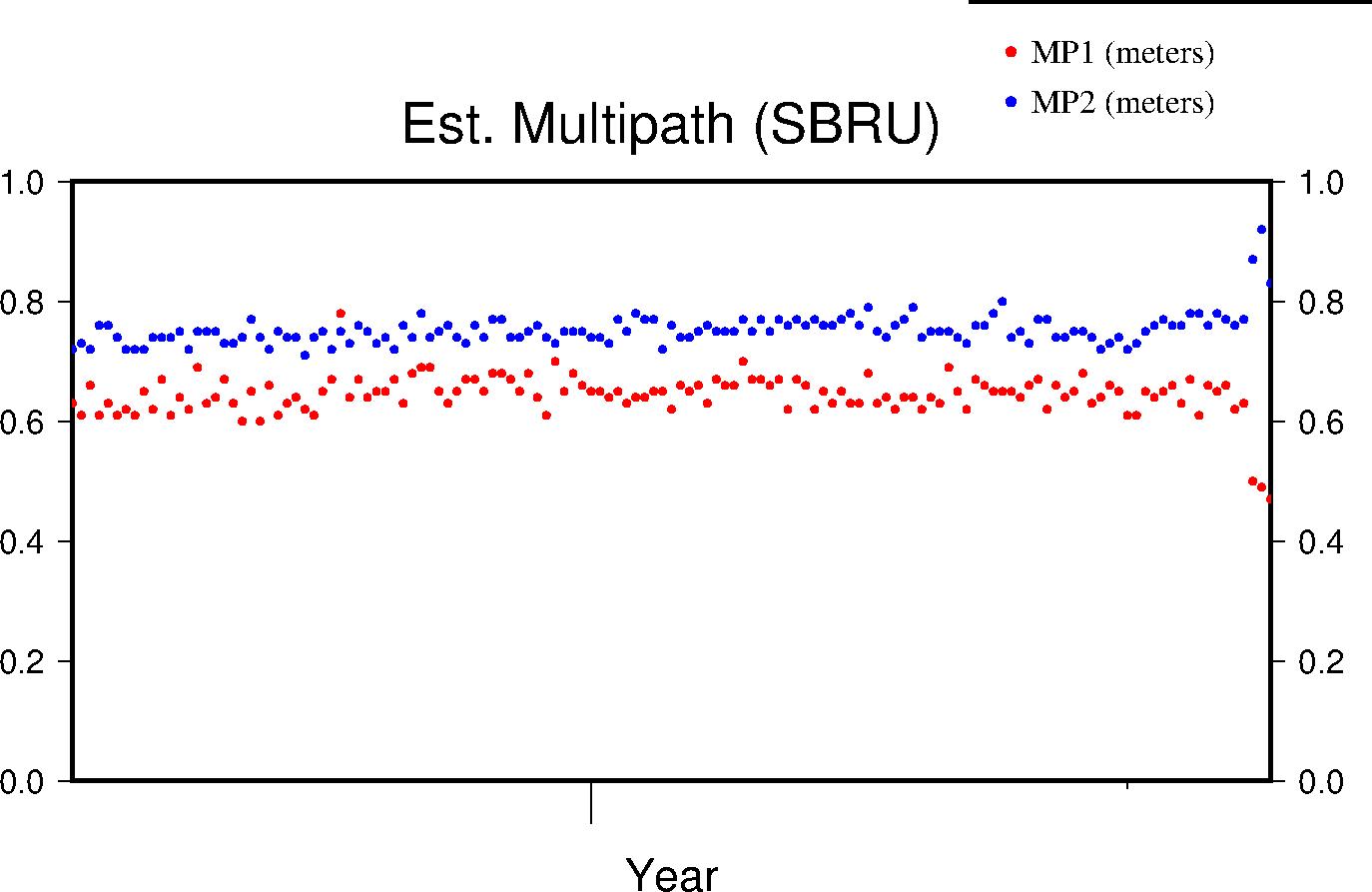 |
